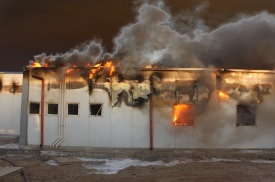If you ask anyone responsible for closing up a business whether they leave the facility secure, they’ll most likely tell you that they do.
But can they be positive they’ve done everything they should have to prevent an overnight fire or robbery? Or are they relying on their memory and their ability not to be distracted or forget things?
When it comes to property security, memory and human infallibility are risky things to rely on. There’s only one way to be certain a business is securely closed, and that’s using a checklist.
When closing, checklists prevent mistakes, ensuring that the business can reopen again and that it won’t be burglarized. Checklists for closing can turn out to be the risk-management step that saves a company from disaster.
A brief check isn’t enough. Many business fires or robberies could have been prevented if one small thing had been noticed—a piece of rarely used equipment left plugged in, an oil-soaked rag left lying near a heat source, a vent covered up by a box, a seldom-used door left unbolted, a window closed but unlocked, and the list goes on.
To be sure of overnight security, you need a formalized checklist that must be completed every night before closing the doors.
This checklist will vary from facility to facility. However, the fundamentals of checking for fire safety and theft protection are essentially the same for any business, and the following items should always be included:
Fire Prevention
- Are all flammables correctly stored?
- Are combustible materials stored away from heat sources?
- Has the facility had time to cool down from any hot work?
- Has the hot-work area had a fire inspection?
- Is all equipment turned off, or unplugged if it should be?
- Are oily rags and other loose materials that could combust stored properly?
- Has any temporary heating equipment been unplugged or shut off?
Crime Prevention
- Has the security system been set?
- Have all doors and windows been locked?
- Are the exterior lights working?
- Are video cameras working?
- Have you checked to make sure no one is inside the building?
- Are all cash, equipment, inventory, customer property, and other valuables properly stored and secured?
- Are interior lights on that reveal anything valuable?
You’ll need to look at your own fire and theft hazards to determine what needs to be on your closing checklist, but simply checking these basics will provide far greater overnight security than a quick, informal check (or no check at all!).
Takeaway
Using a checklist for closing a business allows you to sleep easy at night knowing that everything possible has been done to prevent an overnight fire or break-in.
The Checker Software allows you to customize checklists for any process, including closing for the day. We can create checklists with all the items in your specific closing process. Learn more.
Image courtesy of Al Jazeera English, Creative Commons.










